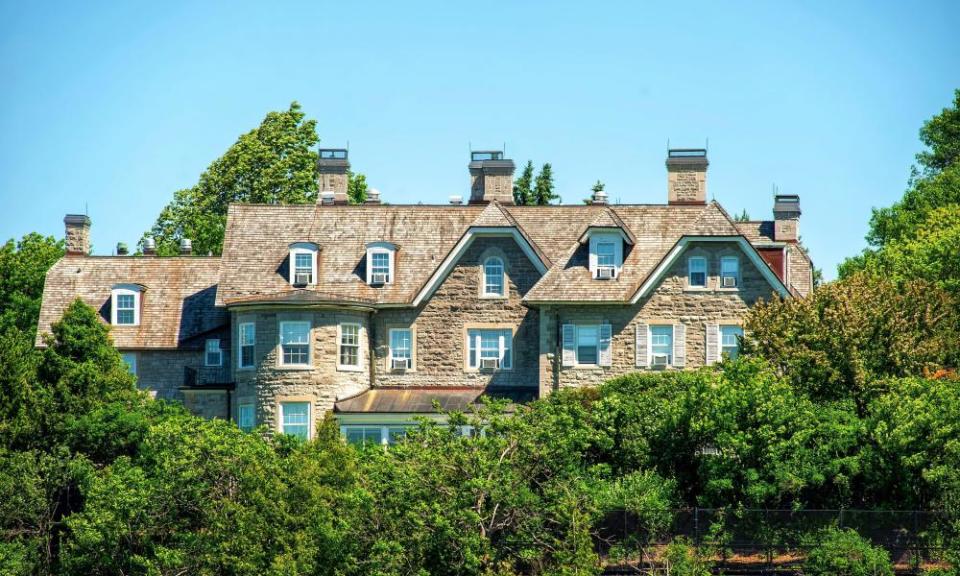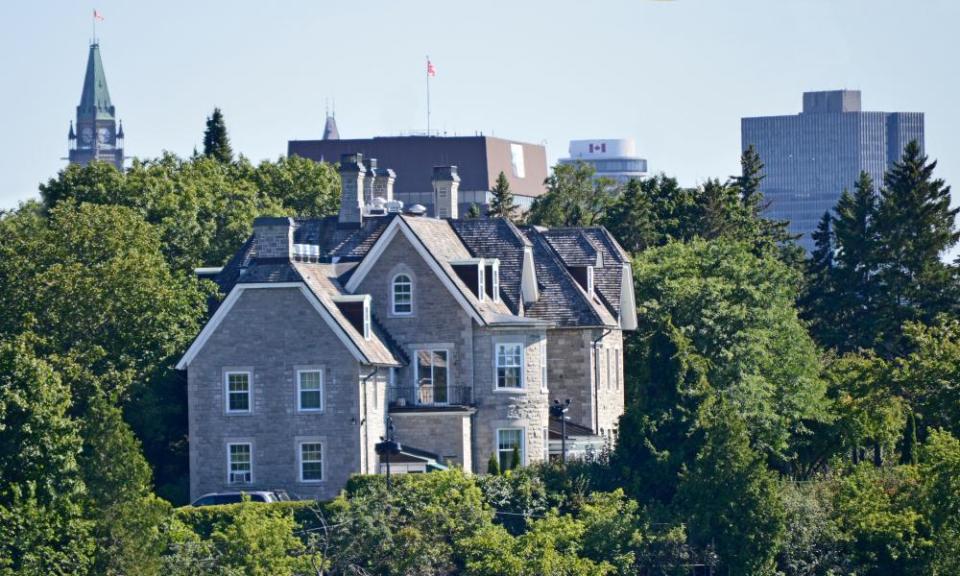Canada: PM’s residence is falling to bits – but who’s willing to pay for repairs?

Once home to Canada’s powerful lumber barons, 24 Sussex Drive, tucked away in a forested enclave of the capital, is one of the country’s most symbolically important homes.
But decades of negligence have left the official residence of the prime minister plagued with mould, cracked windows, failing plumbing and an electric system widely seen as a fire hazard.
Last year, the National Capital Commission (NCC), the group tasked with preserving heritage buildings in Ottawa, shut down the residence, estimating the cost of renovating and upgrading at nearly C$40m (US$30m) – a staggering figure that reflects decades of penny-pinching when it comes to maintenance. And without any spending commitments from the current government, the building’s future remains in question.
“Imagine the White House or the Élysée Palace falling apart. It sends the message that you can’t even take care of your own house,” said Lyette Fortin, a professor at Carleton University who previously worked with the NCC as a conservation architect. “The lack of maintenance and negligence just wastes the people’s money for political games. To me, this is corruption.”
A recent editorial in the Globe and Mail called the house a “monument only to our failures”. Another lamented that the building has become a “decaying beacon signalling Canada’s inability to recognize its own heritage”.
The estate, originally named Gorffwysfa (Welsh for “The Place of Peace”) has housed 11 prime ministers since the government took it over in 1951.
But its shortcomings have long plagued heads of government. Jean Chrétien, prime minister from 1993 to 2003, brought reporters to witness the need for buckets to catch rainwater from a leaky roof. Only after a storm blew off sections of the roof did he finally get the needed repairs.
Related: Justin Trudeau delays move into prime minister’s house – and childhood home
Justin Trudeau spent years at the house as a child when his father was prime minister, but after taking power in 2015 he soon declared he would not be returning.
“We know that 24 Sussex has been neglected by many generations of politicians and prime ministers over the years. Unfortunately, it’s in terrible condition,” he told reporters. “I have no intention of living in 24 Sussex regardless of how long my mandate or mandates may be as prime minister.”
But in the years since, he too has resisted funding its restoration.
In 2021, the National Capital Commission, which oversees historical buildings throughout Ottawa warned the prime minister’s residence had “reached the point of imminent or actual failure” and was in need of urgent repairs.
Australia’s capital was home to a similar fight over the future of the Lodge, which fell into disrepair.
In addition to security upgrades, any repairs to 24 Sussex are complicated by the presence of asbestos, lead and mould throughout many interior finishes.
In 1999, the cost of needed repairs and upgrades was estimated at C$4m (C$6.5m adjusted for inflation) – a tenth of the current sum. Even then, unlike other G7 nations, the prime minister’s residence lacks secure meeting rooms for government business or the ability to host large events.
Despite calls to tear down the building and rebuild, or to look for a new location, Fortin believes the residence can be modernized.
She recently tasked her architecture students with imagining a future for the building. They proposed environmentally friendly upgrades, including passive heating and cooling, as well as a design that better recognized Indigenous history.
In a country where political leaders make every attempt to avoid the appearance of entitlement, prime ministers have feared accusations of wasting public money.
But a recent poll from the Angus Reid Institute found that the majority of Canadians support investing in the prime minister’s residence – and blame “political cowardice” for inaction.
“Prime minister after prime minister has been unwilling to confront the optics of spending a lot of money on the refurbishment of their living quarters,” said Shachi Kurl, executive director of the Angus Reid Institute.
“But counter to the conventional narrative, and frankly what politicians themselves have been terrified of, there is an openness to renovating or rebuilding this property and fixing it.”

Despite the rising price tag, public disbelief at the derelict state of the residence has created a rare opportunity for the current prime minister, she said.
“Politics is a game of days and weeks, rather than months and years. A refurbishment or rebuild could take decades,” said Kurl. “But this could be the narrow window to act.”
When she worked on Parliament Hill, Fortin would bring parliamentarians “up on cranes” to see the poor state of buildings, many of whom resisted calls in invest in maintaining the seat of government.
“These are not their buildings. They are the buildings of the people and of democracy. And official residences don’t belong to the person living there,” she said.
“Politicians have a responsibility to maintain these buildings. You can’t think only in the short term. That’s a self-serving and corrupt approach. It wastes people’s money. I tell politicians when they go, the buildings stay. They’re bigger than any one person.”

 Yahoo Movies
Yahoo Movies 